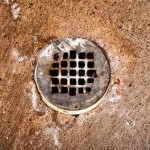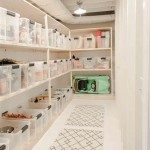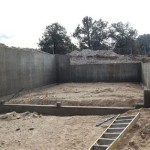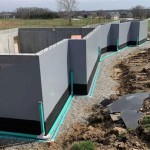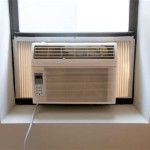How to Remove Mold From Basement Walls and Floors
Mold in a basement is a frequent problem for many homeowners, primarily due to the inherent dampness and lack of sunlight in underground spaces. Mold growth not only damages property but also poses potential health risks to occupants. Therefore, understanding how to effectively remove mold from basement walls and floors is crucial for maintaining a healthy and structurally sound home.
The presence of mold signifies an underlying moisture issue that must be addressed concurrently with the removal process. Ignoring the root cause will inevitably lead to recurring mold problems. Investigating and rectifying sources of water intrusion, such as leaks, condensation, and poor ventilation, are fundamental steps in preventing future mold outbreaks.
Before embarking on mold removal, it is essential to assess the extent of the infestation. Small, localized areas of mold (less than 10 square feet) can generally be handled by homeowners. However, larger infestations may require professional remediation services due to the potential for significant mold spore dispersal and associated health risks.
Protecting oneself during the mold removal process is paramount. Mold spores can become airborne and irritate the respiratory system, skin, and eyes. Appropriate personal protective equipment (PPE) should be worn at all times, including a respirator mask rated N-95 or higher, gloves, and eye protection. Covering exposed skin with long sleeves and pants is also recommended.
Preparing the Area for Mold Removal
Prior to commencing mold removal, the area must be properly prepared to minimize spore dispersal and prevent contamination of other areas of the home. This involves sealing off the affected area with plastic sheeting and tape. Ensure that the plastic sheeting is securely attached to the walls and floors, creating an airtight barrier. Close and seal any air vents in the affected area to prevent the spread of spores through the HVAC system.
Employ a HEPA (High-Efficiency Particulate Air) filter vacuum to remove loose debris and dust from the surfaces to be cleaned. This step helps to improve the effectiveness of the cleaning solutions and minimizes the spread of mold spores during the cleaning process. Dispose of the vacuum bag immediately after use in a sealed plastic bag.
Ventilation is crucial during and after mold removal. Open windows and use fans to circulate fresh air and facilitate drying. However, be mindful not to create drafts that could spread mold spores to other areas of the home. If natural ventilation is insufficient, consider using an air purifier with a HEPA filter to remove airborne mold spores.
Identify and repair the source of the moisture problem. This might involve fixing leaky pipes, sealing cracks in the foundation, improving drainage around the foundation, or addressing condensation issues. Ignoring the source of moisture will render mold removal efforts ineffective in the long run.
Cleaning Mold from Basement Walls and Floors
Several cleaning solutions can be used to remove mold from basement walls and floors. The choice of solution depends on the type of surface and the severity of the mold growth. Common options include bleach solutions, vinegar, borax, and commercial mold removal products.
A bleach solution is often used for non-porous surfaces such as concrete and tile. Prepare a solution of one part bleach to ten parts water. Apply the solution to the mold-affected area and scrub thoroughly with a brush. Allow the solution to sit for 10-15 minutes before rinsing with clean water. Ensure adequate ventilation during and after using bleach, as it can produce harmful fumes. Never mix bleach with ammonia or other cleaning products, as this can create toxic gases.
White vinegar is a natural and effective mold killer. It can be used directly on mold-affected surfaces without dilution. Spray the vinegar onto the mold and let it sit for an hour. Then, scrub the area with a brush and wipe it clean with a damp cloth. Vinegar is a safe and environmentally friendly alternative to bleach, but it may have a lingering odor.
Borax is another natural cleaning agent that can be used to remove mold. Mix one cup of borax with one gallon of water. Apply the solution to the mold-affected area and scrub thoroughly. There is no need to rinse the borax solution, as it will continue to inhibit mold growth. Borax is effective on a variety of surfaces and is relatively safe to use.
Commercial mold removal products are available at most hardware stores. Follow the manufacturer's instructions carefully when using these products. Some products may require specific safety precautions, such as wearing a respirator mask and gloves. Ensure adequate ventilation during and after application.
For porous surfaces such as drywall or wood, mold removal may be more challenging. If mold has penetrated deeply into the material, it may be necessary to remove and replace the affected section. Sanding down moldy wood can be effective if the mold growth is superficial. However, be sure to wear a respirator mask to prevent inhaling mold spores during sanding.
Preventing Future Mold Growth
After removing mold from basement walls and floors, it is crucial to implement measures to prevent future growth. This involves controlling moisture levels, improving ventilation, and using mold-resistant materials.
Controlling moisture is the most effective way to prevent mold growth. Use a dehumidifier to maintain a humidity level below 50% in the basement. Regularly check for leaks and address them promptly. Ensure that gutters and downspouts are functioning properly to direct water away from the foundation.
Improving ventilation can help to reduce moisture buildup and inhibit mold growth. Open windows when possible to allow fresh air to circulate. Install exhaust fans in areas prone to moisture, such as bathrooms and laundry rooms. Consider using a whole-house ventilation system to improve air circulation throughout the home.
Using mold-resistant materials can help to prevent mold growth in the future. When renovating or repairing basement walls and floors, consider using mold-resistant drywall, paint, and flooring. These materials are treated with additives that inhibit mold growth, providing an extra layer of protection.
Regularly inspect the basement for signs of mold growth. Look for discoloration, musty odors, and water stains. Address any issues promptly to prevent mold from becoming established. Clean and disinfect surfaces regularly to remove mold spores and prevent them from germinating.
Consider applying a mold-inhibiting sealant to basement walls and floors. These sealants create a barrier that prevents moisture from penetrating the surface, reducing the risk of mold growth. Follow the manufacturer's instructions carefully when applying sealants.
Proper drainage around the foundation is essential for preventing water intrusion into the basement. Ensure that the ground slopes away from the foundation to direct water away from the building. Consider installing French drains or other drainage systems to improve water runoff.
By implementing these strategies, homeowners can effectively remove mold from basement walls and floors and prevent future outbreaks. Addressing the underlying moisture issues and maintaining a dry, well-ventilated basement are key to creating a healthy and mold-free environment.

How To Remove Mold From Basement Walls In 2024

Removing Mold In Your Basement 5 Steps Woodard

How To Remove Mold Black In Basement

How To Clean Mold On Basement Walls And Prevent Reoccurrence

Mold In The Basement Hgtv

How To Get Rid Of And Prevent Mold Growth On Concrete Environix

How To Remove Mold From Concrete Cleaning Tips Network

How To Remove Mold From Walls True Value

How To Remove Mold From Concrete 7 Effective Ways

How To Get Rid Of And Prevent Mold Growth On Concrete Environix
Related Posts
